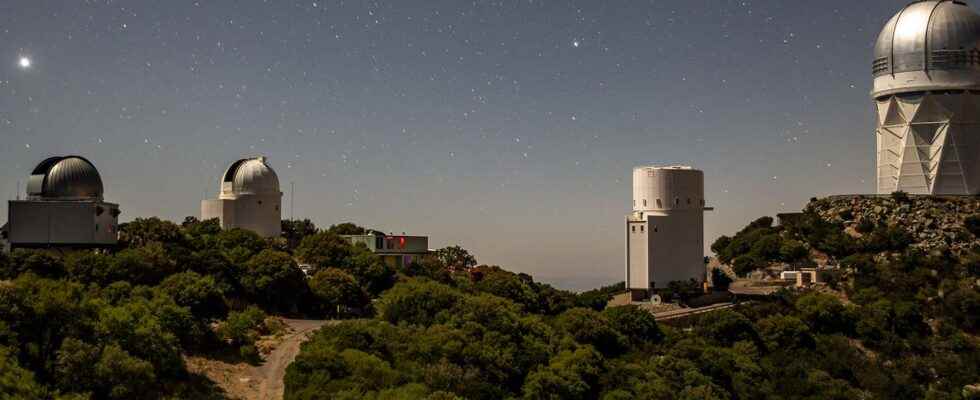It’s been just seven months since Desi, an instrument that scans our skies from US soil, began its observing mission. And it already delivers today the largest and most detailed map of the Universe ever produced. While waiting to provide astronomers with what to study in particular the history of our Universe.
You will also be interested
[EN VIDÉO] The 3D map of the history of the Universe One of the most important advances of the last decade in terms of cosmological observation: the most complete 3D map of the universe ever!
It is in 2019 that the eyes of the Desi instrument — for Dark Energy Spectroscopic Instrument, understand, spectroscopic instrument for thedark energy — opened up for the first time to our Universe. On the side of the National Observatory of Kitt Peak (United States). But the validation phase and the health crisis have been there. And it was only last May that he really began to scan the cosmos. Only seven months ago. However, it has already recorded data in quantities… astronomical! On more than 7.5 million galaxies and quasars. Enough to build the largest and most detailed map of the Universe ever produced. Even as theInstrument Desi has not yet accomplished more than 10% of its five-year mission…
“This card is very beautiful., comments Julien Guy, researcher at Berkeley Lab, in one communicated. It shows huge clusters, filaments and voids. The largest structures in the Universe. Structures in which are hidden the imprint of the primitive Universe and the whole history of its expansion”.
DESI’s monotonous productivity requires incredibly detailed control over the 5000 new generation robots that place the optical fibers of the instrument, ensuring that their positions are correct with less than 10 microns of error.
Credit: Claire Poppett/DESI Collaboration pic.twitter.com/YhbDl08j14
— Institute of Space Sciences (@iSpaceSci) January 13, 2022
Let us recall that the more the spectrum of the light coming to us from a galaxy is shifted towards the red, the more this galaxy moves away from us. Thanks to the spectrographs attached to it, it is therefore these red shifts that open to Desi the doors of the depth of our Universe. And make clusters and supercluster of galaxies which, billions of years later, still bear the traces of the past. From that time when they were only waves ripples in the primordial plasma of our Universe.
The future of our Universe and crucial information about exotic objects
A unique opportunity for astronomers to understand what future awaits our Universe. To understand what role what they call dark energy plays in its expansion. For that, you have to understand its history. How dark energy may have behaved in the past. And it is precisely for this purpose that Desi was developed.
But it will probably be necessary to wait until the end of Desi’s mission to obtain these answers. In the meantime, the instrument could provide astronomers with some keys to understanding other questions. That of black holes of mass intermediary, for example. A black hole can indeed be very difficult to flush out. Unless it attracts to itself enough matter. And then forms an active galactic nucleus. In the largest galaxies, this nucleus may be among the brightest objects in our sky. But in the smaller ones, it remains difficult to distinguish from a star. But Desi should achieve it.
The instrument should also provide a better understanding of theevolution of quasars. The brightest objects in our Universe. The researchers believe that they are initially surrounded by an envelope of dust. And the light they emit makes her blush. As they age, they may well get rid of this dust and then become more blue. By reporting data on nearly 2.5 million quasars, Desi could shed some light on this theory. “This instrument is really great, rejoices Victoria Fawcett, astronomer at the University of Durham (United Kingdom). Beyond quasars, it allows us to observe much fainter and redder objects than before. Systems exotic that we had never had the opportunity to study”.
Interested in what you just read?
.
fs3
